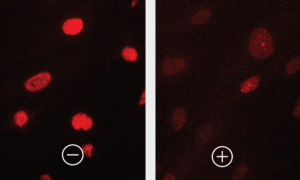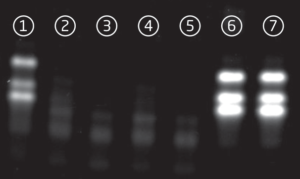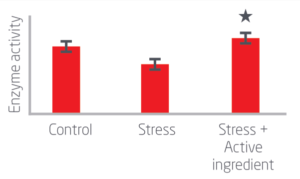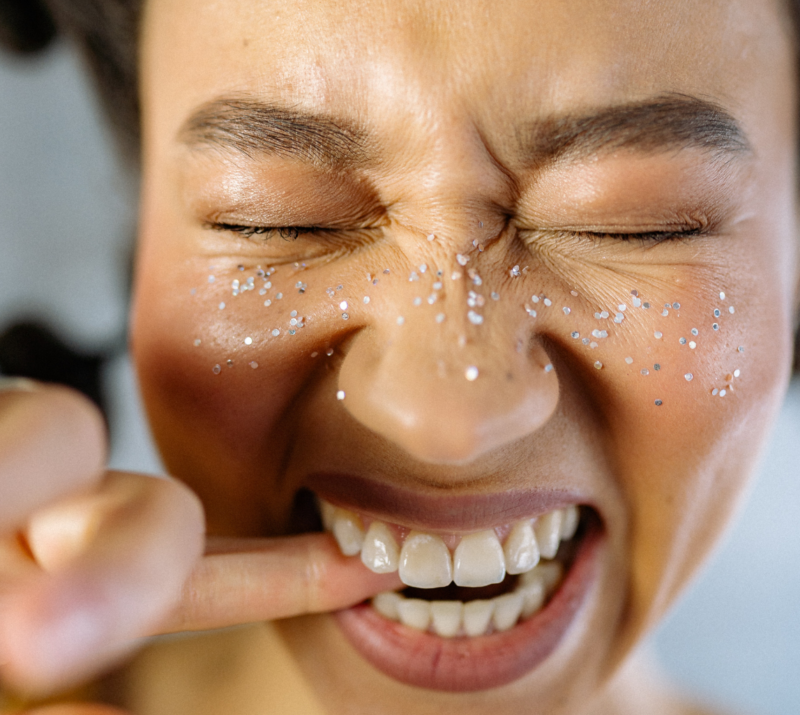Validate the DNA protection of your active ingredient
Over time exposure to sun radiation and pollution have deleterious consequences upon the skin cells, such as DNA damage within the nucleus and the mitochondria. These damages are the main cause of skin disorders, such as early ageing, winkles, dehydrated skin or rash.
DNA protection is important to ensure the optimal function of cells and prevent these skin disorders. Innovative and reliable tests are key to reveal the power of the active ingredients in skin cell DNA protection.
GENprotect is a panel of 3 innovative and complementary tests that assess the ability of your active ingredient to protect and repair the DNA.

GENprotect methods
DNA Damage Visualisation & Quantification
γH2AX foci are located at DNA double-strand damages to enable the recruitment of repair enzymes. In this test, the γH2AX foci are localised and quantified.
γH2AX immunostaining following H202 treatment with (+) or (-) without active ingredient. The numbers of foci (red dot) indicate DNA breaks. We observe that H202 treatment induces a large amount of DNA breaks. These DNA breaks are significantly reduced when cells are treated with an active ingredient.

Telomerase activity assay
The telomerase activity decreases over time and is one of the causes of the skin ageing process. This test determines how an active ingredient stimulates the telomerase activity.
The intensity and quantity of PCR bands reflect the activity level of the active telomerase. 1: non treated, 2 to 5 are different stress conditions; 6 and 7 represent stress conditions + active ingredient at different concentrations.
Stress-induced downregulation of telomerase activity is rescued by the active ingredient.

DNA-Repair enzyme activity
This test involves comparative quantification of multiple DNA repair enzyme activities of the nucleus and mitochondria by fluorescence analysis.
The histogram describes the quantification of the activity of a DNA-repair enzyme with or without treatment with an active ingredient. The stress1 induces a depletion of DNA repair activity.
The depletion is rescued when treated with the active ingredient.
The stress applied can be H2O2, UV light, etc.

From a wide range of techniques, we will precisely assess the effect of your active ingredient.
Cost effective adapted only to the techniques you’ll need.
Accurate results delivered in about 3 months.















